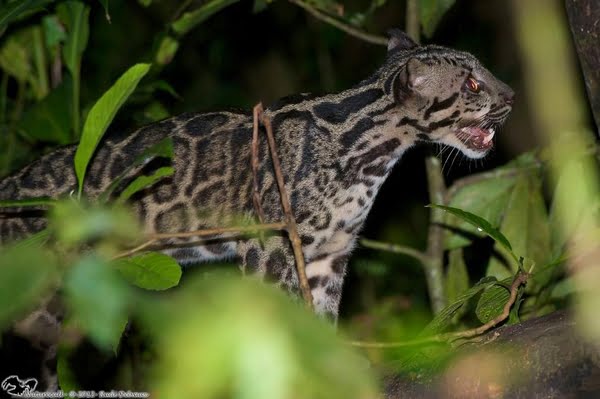Conservation of Sunda Clouded Leopard and Sympatric Carnivores in a Fragmented Landscape
About
Sponsor: Yayasan Sime Darby
Collaborator: Sabah Wildlife Department
Duration: 2012-2017
Aims:
The Kinabatangan Carnivore Programme was established to advance the understanding and the conservation of the diverse carnivore guild of the Lower Kinabatangan Floodplain. This long-term programme aimed to provide insights into Bornean carnivore ecology and density and develop species distribution and habitat suitability models within this unique and important region. In particular, to understand the influence of landscape variables on the clouded leopard movements.
Methods:
GPS/GSM collars were deployed on seven clouded leopard individuals to study their spatial ecology and habitat associations. In parallel, different anaesthesia protocols were tested to identify the most suitable for this species. An ad hoc camera trap survey was used to investigate the Sunda clouded leopard and prey species’ use of plantation habitats, as well as to estimate and investigate seasonal and annual variation in the density of the Sunda clouded leopard in the Lower Kinabatangan. A multi-scale path-level analysis of movement data was applied using known variables associated with clouded leopard habitat (including land cover, canopy cover, carbon density, and road and major river distribution) to develop resistance surfaces and connectivity predictions. The impact of future possible landscape change scenarios was evaluated. These scenarios reflect changes that are either ongoing or stand a realistic chance of occurring and that present both potentially positive and negative implications for the Sunda clouded leopard.
Some results:
The Sunda clouded leopard movement paths were almost exclusively restricted to forest cover, including disturbed forest, so long as it had high canopy closure.
Open-structure oil palm plantation areas, such as recently cleared/planted and underproductive (flooded) plantation areas with low canopy closure, were mostly avoided.
Main road crossings occurred at night when traffic levels were very low.
For this species, functional connectivity exists for all of the protected forest blocks in the LKF. These forests are also connected with the main central forest to the west and the mangrove system to the east but with several bottlenecks.
Conversion of unprotected forests to oil palm plantations would significantly reduce the available Sunda clouded leopard habitat and result in the predicted breakage in connectivity in three places in the western part of the study landscape, which critically provides linkage to the Central Forest area.
On the contrary, the conversion of existing underproductive plantations to forest would bring large benefits to Sunda clouded leopards whilst minimising impacts to the plantation industry. Based on capture-recapture camera trap data, low population densities are estimated for the LKF (1.5 individuals/100 km2). To ensure a viable population over the long term, it is essential to maintain connectivity through the retention of forest cover. Hunting must also be stopped, as there were indications of high poaching activity in the region.
All the results from this project were shared with local and international experts, forming a technical working group to produce a State Action Plan.

